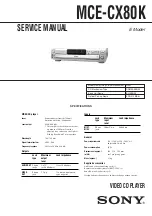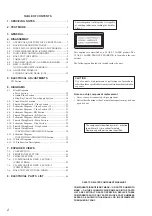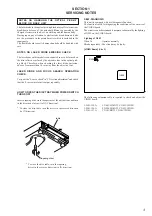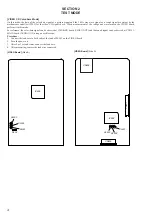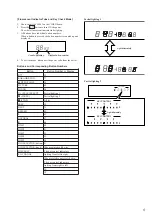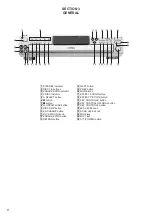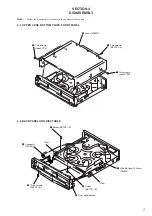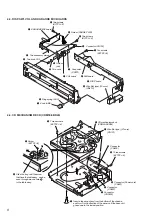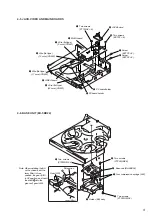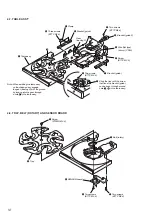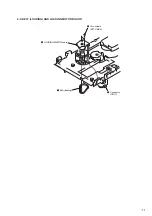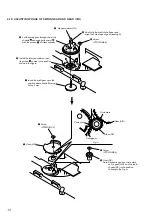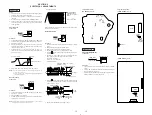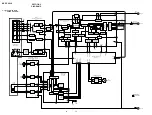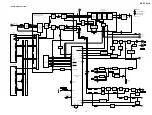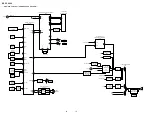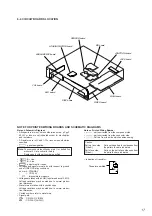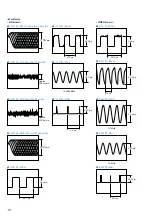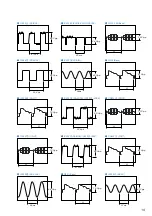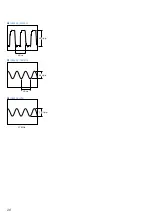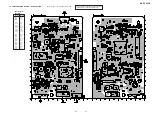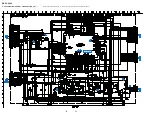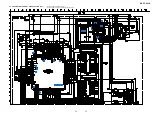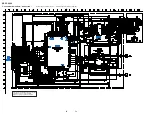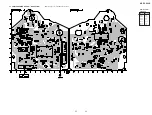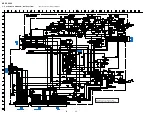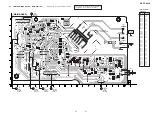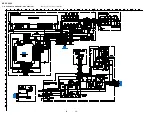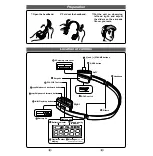
13
13
SECTION 5
ELECTRICAL ADJUSTMENTS
CD SECTION
Notes:
1. CD block basically constructed to operate without adjustment.
Therefore, check each item in order given.
2. Use YEDS-18 disc (Part No.: 3-702-101-01) unless otherwise
indicated.
3. Use the oscilloscope with more than 10 M
Ω
impedance.
4. Clean an object lens by an applicator with neutral detergent
when the signal level is low than specified value with the
following checks.
S-Curve Check
Connection:
Procedure:
1. Connect the oscilloscope to TP (FE) and TP (VC) on BD board.
2. Connect between test point TP (FEI) and TP (VC) by lead wire.
3. Push power switch on.
4. Put disc (YEDS-18) in and push power switch on again and
actuate the focus search. (actuate the focus search when disc
table is moving in and out.)
5. Confirm that the oscilloscope waveform (S-curve) is
symmetrical between A and B. And confirm peak to peak level
within 3.0 ± 1.0 Vp-p.
6. After check, remove the lead wire connected in step 2.
Note:
• Try to measure several times to make sure that the ratio of A : B
or B : A is more than 10 : 7.
• Take sweep time as long as possible and light up the brightness
to obtain best waveform.
RF Level Check
Connection:
Procedure:
1. Connect the oscilloscope to TP (RF) and TP (VC) on BD board.
2. Push power switch on.
3. Put disc (YEDS-18) in and play.
4. Confirm that the oscilloscope waveform is clear and check RF
signal level is correct or not.
Note:
Clear RF signal waveform means that the shape “ ” can be clearly
distinguished at the center of the waveform.
RF signal waveform
When observing the eye pattern, set the oscilloscope for AC range
and raise vertical sensitivity.
E-F Balance Check
Procedure :
1. Connect oscilloscope to test point TP (TE) and TP (VC) on BD
board.
2. Short-circuit the SL502 of the VIDEO board.
3. Push the Power switch on to set the ADJ mode.
4. Put disc (YEDS-18) in to play the number five track.
5. Press the
G
button. (The tracking servo and the sledding servo
are turned OFF.)
6. Check the level B of the oscilloscope’s waveform and the A
(DC voltage) of the center of the Traverse waveform.
Confirm the following :
A/B
×
100 = less than ± 22%
7. Press the
G
button. (The tracking servo and sledding servo are
turned ON.) Confirm the C (DC voltage) is almost equal to the
A (DC voltage) is step 7.
8. Desolder the shortland short-circuited at step 2.
VIDEO SECTION
Frequency Adjustment
Connection:
Procedure:
1. Connect the frequency counter to TP508 (27 MHz) on VIDEO
board.
2. Color system switch (S501) on the JACK board select to NTSC
and push the power switch on.
3. Adjust CT503 on the VIDEO board so that the frequency counter
reading 27.0 MHz ± 80 Hz at stop status.
Adjustment Location:
[VIDEO BOARD] (Side B)
+
–
BD board
TP (FE)
TP (VC)
oscilloscope
A
B
symmetry
within 3.0
±
1.0 Vp-p
S-curve waveform
+
–
BD board
TP (RF)
TP (VC)
oscilloscope
(AC range)
VOLT/DIV: 200 mV
TIME/DIV: 500 ns
(with the 10: 1 probe
in use)
level: 1.3 Vp-p
+0.25
–0.20
BD board
oscilloscope
TP(TE)
TP(VC)
0V
B
Center of the waveform
A (DC voltage)
level : 1.3
±
0.6 Vp-p
Traverse waveform
VOLT/DIV : 500mV (10 : 1 probe)
TIME/DIV : 10ms
0V
Tracking servo
Sledding servo
OFF
Tracking servo
Sledding servo
ON
C (DC
voltage)
Traverse waveform
TP
(TE)
TP
(FE)
TP
(RF)
TP
(VC)
TP
(FEI)
TP
(FOK)
+
–
TP508 (27 MHz)
VIDEO board
frequency counter
IC505
IC507
TP508
(27 MHz)
SL502
CT503
VIDEO
Frequency
Adjustment
Adjustment Location:
[BD BOARD] (SIDE B)
IC502
CN503
CN501
SL502
[VIDEO BOARD] (Side A)

